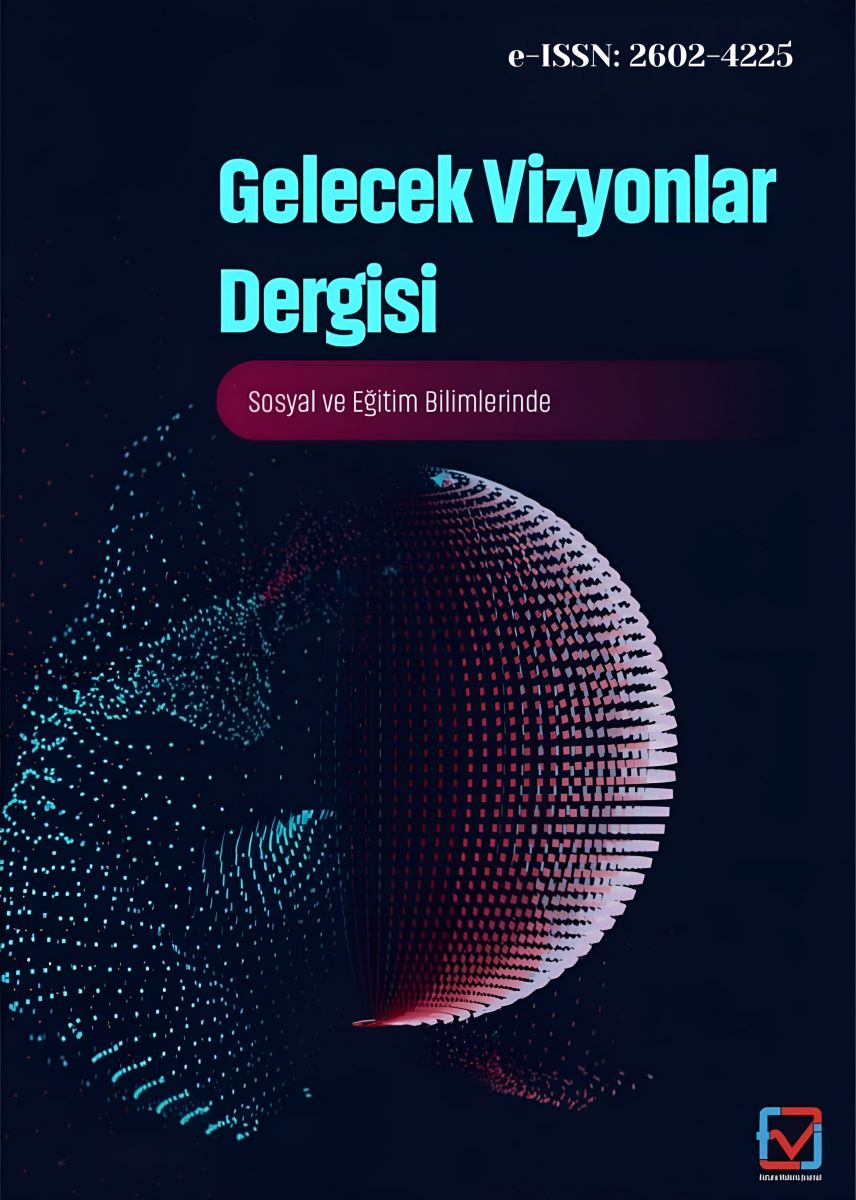Araştırma Makalesi | Açık Erişim
Gelecek Vizyonlar Dergisi 2025, Clt. 9(1) 13-20
Water Symbolism in T.S. Eliot’s “The Four Quartets” and Ian McMillan’s “Canal Life”
ss. 13 - 20 | DOI: https://doi.org/10.29329/fvj.2025.1322.2
Yayın Tarihi: Haziran 30, 2025 | Görüntüleme Sayısı: 19/24 | İndirilme Sayısı: 19/26
Özet
From ancient religious texts and myths to contemporary literary works, water has always been a highly symbolic element linked to life and human experience. While many studies have explored water symbolism within literary works, comparative analyses of this symbol across different writings are less common. So, the aim of this study is to compare the symbolic representation of “water” in T.S Eliot’s “The Four Quartets” and Ian McMillan’s “Canal Life”. In “The Four Quartets” Eliot employs water imagery as a powerful force that embodies the flow of time and memories. Through this symbolism, Eliot delves into the deep subconscious of human nature and explores the necessity of a spiritual journey as a source of meaning, enlightenment, and redemption. McMillan, on other hand, uses the symbol of water in “Canal Life” as a source of reflection, tranquility, and nostalgia. It signifies pleasures and the passage of time, tightly connected to communities. This essay provides a comprehensive overview of the enduring power of water as a symbol that can hold truths, experiences, and times of human life and its ability to reflect beyond the limits of perception. Through this thorough comparative analysis that is based on symbolism theory, the study reveals the unique perspective of each poet in reflecting water symbolism and how it offers richness in these literary works.
Anahtar kelimeler: Keywords: T.S.Eliot, Ian McMillan, Symbolism, Water Symbolism, “The Four Quartets”, “Canal Life”Anahtar Kelimeler: T.S. Eliot, Sembolizm, Su Sembolizmi, “Canal Life”
APA 7th edition
Aldmour, A.T. (2025). Water Symbolism in T.S. Eliot’s “The Four Quartets” and Ian McMillan’s “Canal Life”. Gelecek Vizyonlar Dergisi, 9(1), 13-20. https://doi.org/10.29329/fvj.2025.1322.2
Harvard
Aldmour, A. (2025). Water Symbolism in T.S. Eliot’s “The Four Quartets” and Ian McMillan’s “Canal Life”. Gelecek Vizyonlar Dergisi, 9(1), pp. 13-20.
Chicago 16th edition
Aldmour, Amal Taha (2025). "Water Symbolism in T.S. Eliot’s “The Four Quartets” and Ian McMillan’s “Canal Life”". Gelecek Vizyonlar Dergisi 9 (1):13-20. https://doi.org/10.29329/fvj.2025.1322.2
Bachelard, G. (1983). Water and dreams: An essay on the imagination of matter. (R. Farrell, Trans.). Dallas: Pegasus Foundation. (Original work published 1942).
BALAKRISHNAN, P. (1991). An Indian View of T. S. Eliot’s “Four Quartets.” The American Scholar, 60(1), 73–89. http://www.jstor.org/stable/41211867
Bradbury, J. M. (1951). “Four Quartets”: The Structural Symbolism. The Sewanee Review, 59(2), 254–270. http://www.jstor.org/stable/27538064
Eliot, T. S. (n.d.). Burnt Norton (Four Quartets). http://davidgorman.com/4quartets/1-norton.htm
Gary Chamberlain. (2012). From Holy Water to Holy Waters. Water Resources IMPACT, 14(2), 6–9. http://www.jstor.org/stable/wateresoimpa.14.2.0006
Heilman, R. B. (1983). Cleanth Brooks and “The Well Wrought Urn.” The Sewanee Review, 91(2), 322–334. http://www.jstor.org/stable/27544142
Jung, C. G. (1959). The Archetypes and the Collective Unconscious. Printon University Press.
Kennedy, David. New Relations: The Refashioning of British Poetry, 1980-94. Bridgend: Seren, 1996. Print.
Kirk, R. (2008). Eliot and his age. Wilmington: ISA Books.
McMillan, I. (n.d.). Canal Life. http://poetrysociety.org.uk/poems/canal-life/
McNiff, E. (1989). The Art of Mentoring. Element Books.
Moses, O. (2005). AFFECTING TIME: T.S. Eliot’s “Burnt Norton.” Soundings: An Interdisciplinary Journal, 88(1/2), 129–151. http://www.jstor.org/stable/41179103
Poetry Archive. (n.d.). Ian McMillan. http://poetryarchieve.org/poet/ian-mcmillan/
Singh, R. P. B. (1994). Water Symbolism and Sacred Landscape in Hinduism: A Study of Benares (Vārāṇasī) (Wassersymbolismus und heilige Landschaft im Hinduismus: Eine Studie aus Benares (Vārāṇasi)). Erdkunde, 48(3), 210–227. http://www.jstor.org/stable/25646594
Wellek, R., BEWELL, A., KORTENAAR, N. T., WARKENTIN, G., DUPRÉ, L., Hickman, B., Nicholls, A., & Richter, S. (1970). The Term and Concept of Symbolism in Literary History. New Literary History, 1(2), 249-270. https://doi.org/429086.
Witzel, M. (2015). Water in Mythology. Daedalus, 144(3), 18–26. http://www.jstor.org/stable/24711227
